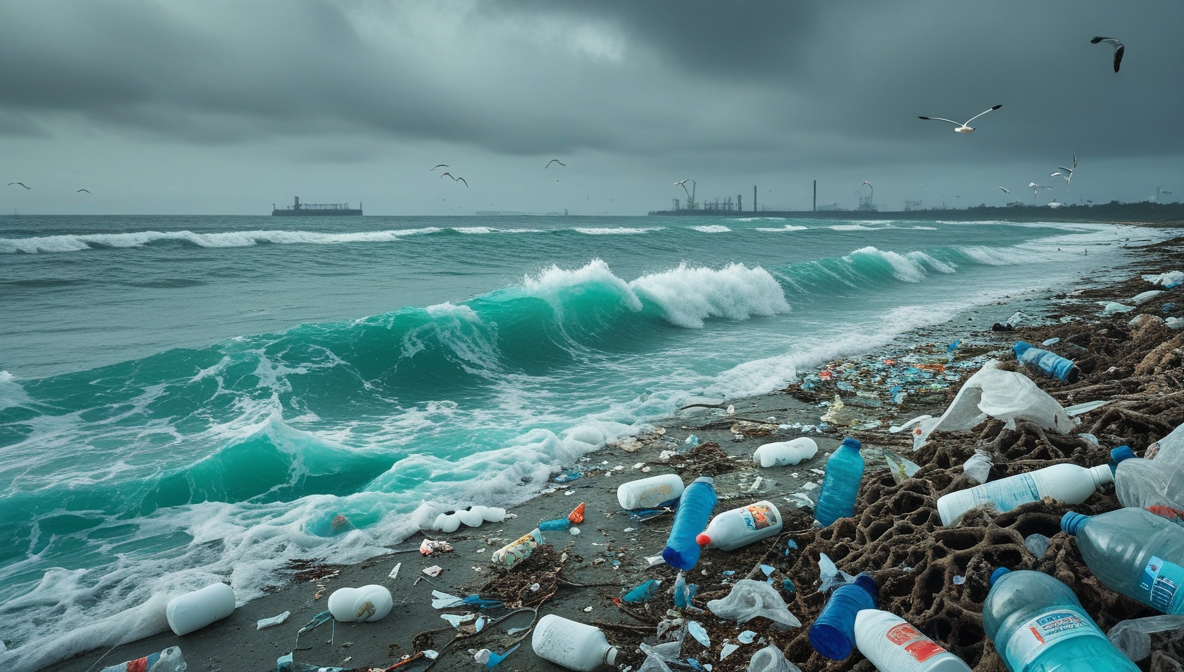Plastic pollution is a growing threat to coastal ecosystems worldwide, affecting marine life, human health, and local economies. Addressing this issue begins with understanding its far-reaching effects and the actionable steps that can mitigate its impact.
Understanding Plastic Pollution on Coasts
Plastic waste comprises materials that resist natural decomposition, often persisting for centuries. These plastics accumulate in coastal areas due to improper waste disposal, inadequate recycling, and ocean currents transporting debris. Coastal regions are particularly vulnerable because they act as collection points where waste from land and sea converge.
Effects on Marine Life
- Entanglement Hazards
Marine animals often become trapped in discarded fishing nets, plastic bags, and six-pack rings. This entanglement restricts movement, feeding, and reproduction, leading to injury or death. Species such as sea turtles, dolphins, and seabirds are most at risk. - Ingestion of Plastics
Mistaking plastic particles for food, marine animals consume them. This ingestion can cause intestinal blockages, malnutrition, and exposure to toxic chemicals. Microplastics—fragments smaller than 5mm—pose additional risks, as they infiltrate the food chain, affecting organisms from plankton to predators. - Habitat Disruption
Plastic debris accumulates on coral reefs, beaches, and estuaries, altering natural habitats. Coral reefs suffer physical damage from plastics, which hinders their growth and makes them more susceptible to disease.
Human Health Concerns
- Toxic Chemical Exposure
Plastics release harmful chemicals such as bisphenol A (BPA) and phthalates into the environment. These compounds enter the food chain, ultimately affecting human health. Long-term exposure is linked to hormonal disruptions and chronic illnesses. - Contaminated Seafood
Microplastics ingested by marine animals end up in seafood consumed by humans. This contamination raises concerns about potential health risks, including gastrointestinal issues and inflammatory responses. - Polluted Drinking Water
Coastal communities relying on desalinated seawater may unknowingly consume microplastics. These particles have been detected in drinking water sources globally, emphasizing the need for stricter filtration measures.
Economic Impacts
- Tourism Decline
Littered beaches deter tourists, leading to reduced revenue for local businesses and governments. Clean-up costs further strain resources in regions dependent on tourism. - Fisheries Losses
Declining fish populations due to habitat destruction and plastic ingestion impact commercial and subsistence fisheries. Reduced catches and damaged gear impose financial burdens on coastal communities. - Shipping and Navigation Risks
Plastics floating in coastal waters pose hazards to vessels by entangling propellers and clogging cooling systems. These incidents increase repair costs and disrupt maritime operations.
Environmental Consequences
- Ecosystem Imbalances
Plastics alter the natural flow of nutrients, disrupt food webs, and contribute to habitat degradation. This imbalance affects biodiversity, reducing the resilience of coastal ecosystems to environmental stressors. - Carbon Sequestration Disruption
Coastal vegetation such as mangroves and seagrasses plays a critical role in carbon storage. Plastics covering these areas inhibit photosynthesis, reducing their ability to sequester carbon and mitigate climate change. - Spread of Invasive Species
Floating plastics act as rafts for invasive species, allowing them to colonize new areas. These species outcompete native organisms, leading to further ecological damage.
Steps to Mitigate Plastic Pollution
- Improved Waste Management
Establishing efficient waste collection and recycling systems prevents plastics from reaching coastal environments. Local governments can implement stricter regulations and incentivize recycling programs. - Banning Single-Use Plastics
Prohibiting items such as plastic straws, bags, and utensils reduces the volume of waste entering coastal areas. Policies promoting biodegradable alternatives encourage sustainable consumer practices. - Community Clean-Up Initiatives
Organizing regular beach clean-ups involves the public in conservation efforts. These activities to keep beaches clean raise awareness while directly reducing plastic waste in coastal regions. - Innovative Recycling Technologies
Advancements in recycling methods, such as chemical recycling, offer new opportunities to convert plastic waste into reusable materials. Encouraging investment in these technologies can address the issue at scale. - Education and Advocacy
Raising awareness about the impact of plastic pollution fosters behavioral changes among individuals and businesses. Campaigns targeting waste reduction and proper disposal practices are crucial.
Global Collaboration for Change
- International Agreements
Treaties like the Global Plastics Treaty aim to curb plastic production and improve waste management globally. Collaborative efforts ensure that no single region bears the brunt of addressing the issue. - Corporate Responsibility
Companies producing plastics have a role in minimizing environmental harm. Initiatives like extended producer responsibility (EPR) require manufacturers to manage the lifecycle of their products. - Research and Innovation
Ongoing research into biodegradable plastics and alternative materials offers hope for reducing long-term pollution. Supporting such innovation can accelerate the transition to sustainable practices.
Final Thoughts
Plastic pollution on coastal environments affects every aspect of life, from marine ecosystems to human health and economic stability. Addressing this issue requires collective action at local, national, and global levels. Through innovation, education, and policy changes, it is possible to protect these vital ecosystems for future generations.


